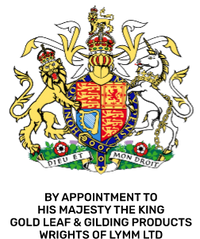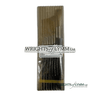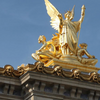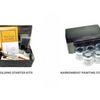Gold Leaf Across the World - Bahrain
- by Sam Wozniak
The Enduring Art of Gold Leaf in Bahrain: Tradition, Restoration, and Monumental Beauty
Bahrain, an island nation rich in history and culture, holds a lesser-known but fascinating connection to the ancient and luxurious art of gold leaf (ورق الذهب). From Islamic art to contemporary architecture, Bahrain’s use of gilding (التذهيب) demonstrates a deep appreciation for beauty, craftsmanship, and spiritual symbolism. Whether applied in restoration (الترميم) or newly commissioned works, gold leaf — especially 24 carat (عيار 24) and 23.5 carat (عيار 23.5) — continues to shine as a hallmark of cultural prestige.
Gold Leaf in Bahrain: A Heritage Rooted in Spiritual and Royal Aesthetics
Historically, gold leaf (ورق الذهب) was used across the Islamic world to decorate manuscripts, mosque interiors, and architectural details. Bahrain, with its strategic location in the Arabian Gulf, absorbed artistic influences from Persia, Mesopotamia, and the wider Islamic Golden Age. Gold leaf’s luminous quality made it ideal for expressing divine light and spiritual elevation in sacred settings — a tradition that Bahraini artisans embraced in religious calligraphy, mihrabs, and ornamental carvings.
In traditional Bahraini architecture, goldleaf (ورق الذهب) was often used as part of gilding (التذهيب) techniques to embellish wooden doors, decorative ceiling panels, and window screens. These flourishes were not only beautiful but also symbolic, reflecting wealth, hospitality, and reverence for heritage.
Gilding in Religious and Monumental Spaces
The use of gold leaf in monumental (ضخم / تذكاري) settings remains a key feature of Bahraini cultural expression. In mosques across Manama and Muharraq, for example, gold leaf highlights Quranic inscriptions and geometric arabesques, drawing the eye and uplifting the spirit. Whether 23.5 carat for structural durability or 24 carat for its unmatched purity, the selection of goldleaf depends on the material and the intended longevity of the artwork.
Modern Islamic centres and museums in Bahrain have also adopted gilding for monumental entranceways and feature walls, merging tradition with contemporary design. The balance of history and modernity in such spaces underscores Bahrain’s ongoing commitment to preserving cultural authenticity while celebrating innovation.
Gold Leaf in Restoration and Preservation Efforts
In recent decades, Bahrain’s cultural institutions and heritage projects have placed increasing importance on restoration (الترميم). Many historical mosques and royal residences have undergone meticulous efforts to bring their original gold-leafed elements back to life. Skilled artisans use 23.5 carat gold leaf for restoration work, as it is slightly more malleable and resistant to abrasion — ideal for reapplying to wood, plaster, and aged metal surfaces.
Projects led by the Bahrain Authority for Culture and Antiquities often collaborate with regional craftsmen and gold leaf specialists to ensure historical accuracy and material integrity. Restoration work using goldleaf (ورق الذهب) serves not only to revive visual splendour but also to safeguard Bahrain’s cultural identity for future generations.
Modern Design, Luxury, and Gold Leaf in Contemporary Bahrain
Beyond historical and religious uses, gold leaf has also found a home in Bahrain’s luxury design and lifestyle sectors. High-end interior designers frequently incorporate 24 carat gold leaf into custom furniture, decorative wall panels, and ceiling murals in hotels, villas, and private residences. Its timeless shine and association with royalty make it a favored element in expressing Bahraini opulence.
Moreover, gold leaf is now being used in modern Bahraini art — particularly in calligraphy and mixed-media works that explore identity, faith, and heritage. Artists often blend traditional gilding (التذهيب) with modern textures and materials, creating powerful visual narratives that reflect both the past and the present.
Conclusion: Bahrain’s Gilded Legacy and Golden Future
Bahrain’s relationship with gold leaf (ورق الذهب) is both historical and evolving. From the gleaming domes of sacred spaces to the gilded frames of modern art, the application of 23.5 carat and 24 carat gold leaf continues to represent the island’s deep respect for beauty, craftsmanship, and cultural preservation. Through gilding, restoration, and monumental art, Bahrain maintains its luminous link to the broader Islamic world and positions itself as a guardian of timeless artistic traditions.
Whether viewed in a centuries-old mosque or a luxurious modern home, gold leaf in Bahrain is more than just a decorative detail — it’s a living symbol of spiritual devotion, national pride, and artistic excellence.






